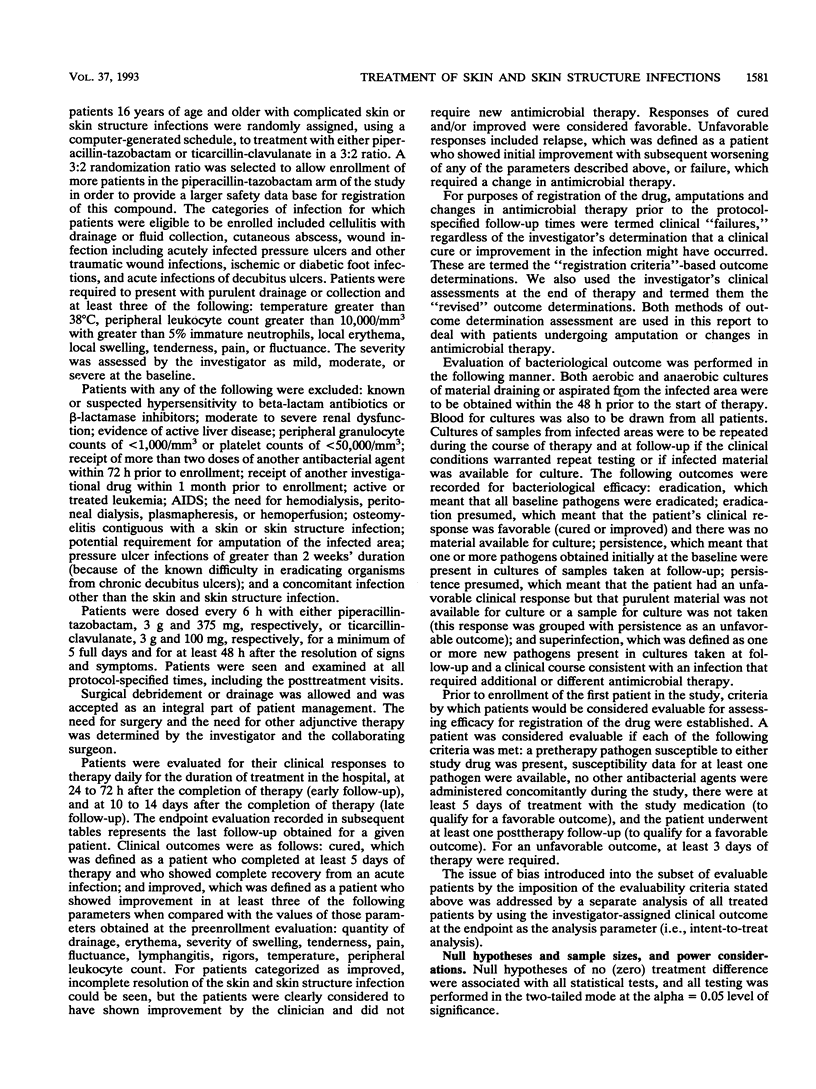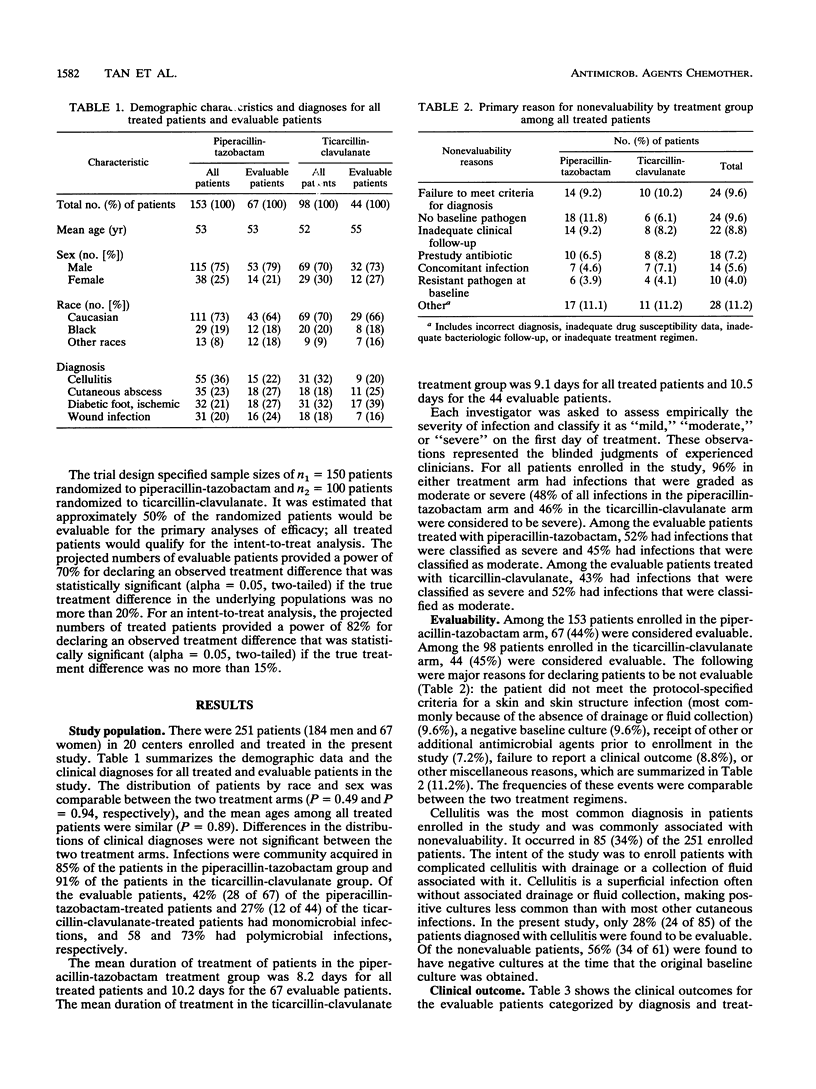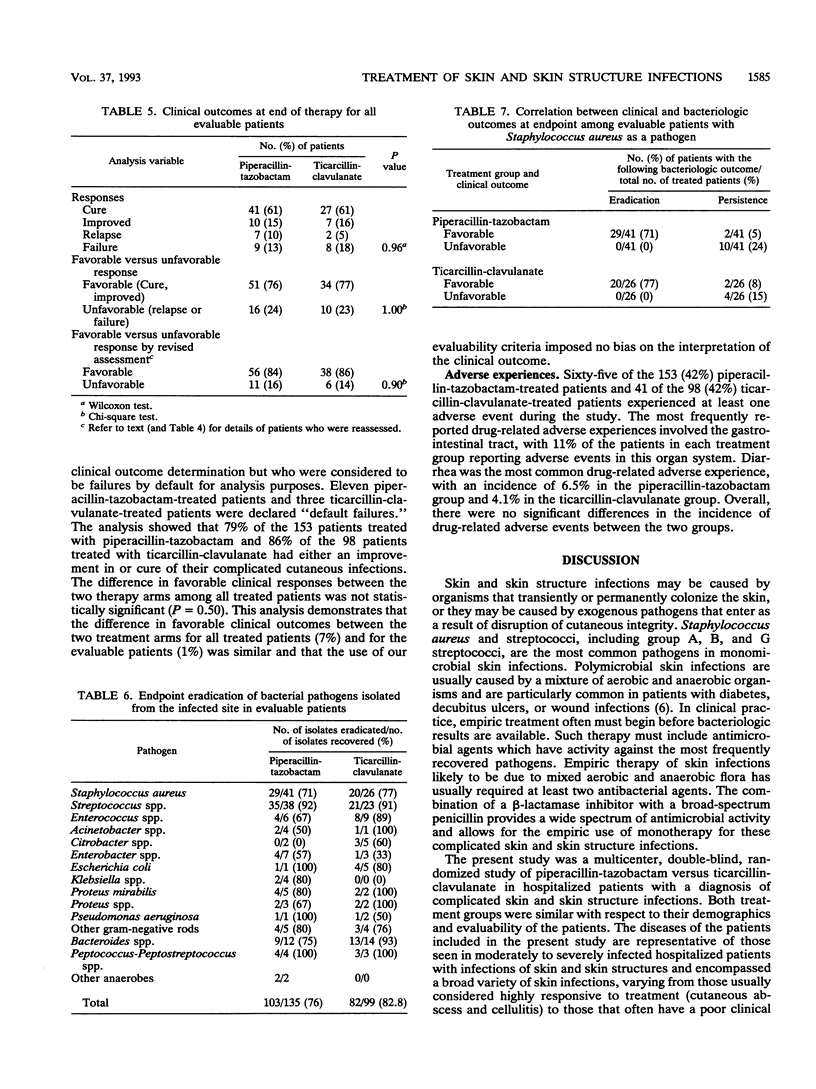Abstract
We compared the efficacy and safety of two beta-lactam-beta-lactamase inhibitor combinations, namely, piperacillin-tazobactam and ticarcillin-clavulanate, in the treatment of complicated bacterial infections of skin that required hospitalization. The study was a randomized, double-blind, comparative trial involving 20 centers. The infections were classified as (i) cellulitis with drainage, (ii) cutaneous abscess, (iii) diabetic or ischemic foot infection, and (iv) infected wounds and ulcers with drainage. The clinical response rates were comparable for the two treatment regimens (61% of the patients were cured with piperacillin-tazobactam and ticarcillin-clavulanate and improvement was seen in 15 and 16% of patients treated with piperacillin-tazobactam and ticarcillin-clavulanate, respectively). Both regimens were found to be safe and well tolerated. These data support the use of piperacillin-tazobactam for initial empiric therapy of hospitalized patients with complicated skin and skin structure infections.
Full text
PDF






Selected References
These references are in PubMed. This may not be the complete list of references from this article.
- Aronoff S. C., Jacobs M. R., Johenning S., Yamabe S. Comparative activities of the beta-lactamase inhibitors YTR 830, sodium clavulanate, and sulbactam combined with amoxicillin or ampicillin. Antimicrob Agents Chemother. 1984 Oct;26(4):580–582. doi: 10.1128/aac.26.4.580. [DOI] [PMC free article] [PubMed] [Google Scholar]
- File T. M., Jr, Tan J. S. Ticarcillin-clavulanate therapy for bacterial skin and soft tissue infections. Rev Infect Dis. 1991 Jul-Aug;13 (Suppl 9):S733–S736. doi: 10.1093/clinids/13.supplement_9.s733. [DOI] [PubMed] [Google Scholar]
- Fortner C. L., Finley R. S., Schimpff S. C. Piperacillin sodium: antibacterial spectrum, pharmacokinetics, clinical efficacy, and adverse reactions. Pharmacotherapy. 1982 Nov-Dec;2(6):287–299. doi: 10.1002/j.1875-9114.1982.tb03202.x. [DOI] [PubMed] [Google Scholar]
- Kinzig M., Sörgel F., Brismar B., Nord C. E. Pharmacokinetics and tissue penetration of tazobactam and piperacillin in patients undergoing colorectal surgery. Antimicrob Agents Chemother. 1992 Sep;36(9):1997–2004. doi: 10.1128/aac.36.9.1997. [DOI] [PMC free article] [PubMed] [Google Scholar]
- Lipsky B. A., Pecoraro R. E., Wheat L. J. The diabetic foot. Soft tissue and bone infection. Infect Dis Clin North Am. 1990 Sep;4(3):409–432. [PubMed] [Google Scholar]
- Sapico F. L., Canawati H. N., Witte J. L., Montgomerie J. Z., Wagner F. W., Jr, Bessman A. N. Quantitative aerobic and anaerobic bacteriology of infected diabetic feet. J Clin Microbiol. 1980 Sep;12(3):413–420. doi: 10.1128/jcm.12.3.413-420.1980. [DOI] [PMC free article] [PubMed] [Google Scholar]
- Winston D. J., Murphy W., Young L. S., Hewitt W. L. Piperacillin therapy for serious bacterial infections. Am J Med. 1980 Aug;69(2):255–261. doi: 10.1016/0002-9343(80)90386-1. [DOI] [PubMed] [Google Scholar]


